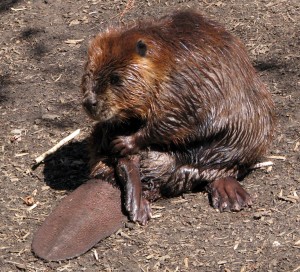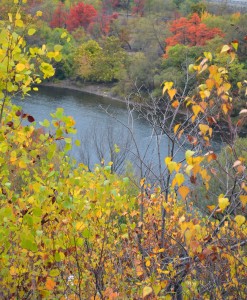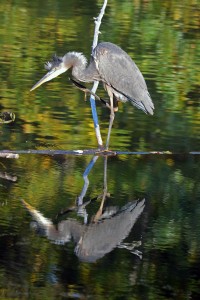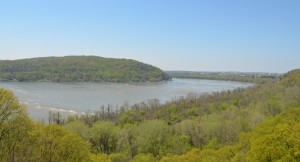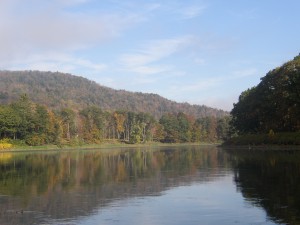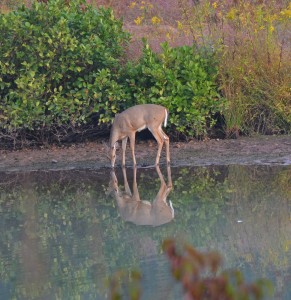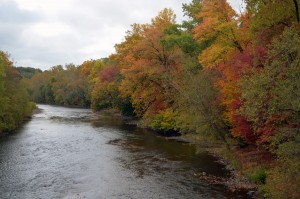Darby and I took the boat out for short fishing trip to a local lake a couple weeks ago. As we quietly made our way to the far end of the lake, she discovered that we were not alone. Our mysterious “company” was not another boat, or angler, but a large, brown animal that was working on some tree branches at the shoreline. It was noisy as it gnawed the bark and leaves, while pulling the long, birch branch into the water. Maybe this was my Sasquatch I’ve been waiting to see for so many years! But as we drifted closer, it just didn’t seem large enough for a Sasquatch, unless it was laying down in the water, trying to hide! Nope, just another false Bigfoot sighting. The critter we discovered was a Beaver, and a big one at that!
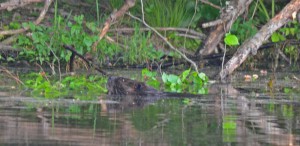
Beavers are aquatic mammals. They’re the largest rodents in North America, and are classified as furbearers. Adults may grow to 50 pounds are larger. Their fur is thick and they have a large, flat, leathery tail. The tail helps them to swim by propelling them through the water. It also helps balance them as they stand up. As my daughter and I discovered, they also use their tail as a warning, by slapping it loudly on the surface of the water to scare away any potential threats, like us, when we steered our boat too close to where the large critter was swimming. I’ve seen them do this many times in the past, so I warned Darby that the animal would probably do it. As it paddle towards us, I saw it start to arch its back, and I knew what was coming next. “Ker-Whack,” went the large, flat tail on the water surface, as the Beaver dove under. Darby almost dropped her iPhone overboard after being startled by the large rodent. Click below on “Tail Slappin” to open a link to see/hear our close encounter with a Beaver!
Beavers prefer living in slow moving or still waters. Sometimes they have to create these “still waters” themselves, by damming up a small stream or creek. They do this by gnawing down small trees with two, long front teeth, and along with branches, sticks and mud, effectively pack it all together with their front feet. They’re nicknamed nature’s engineers. The new dam backs up the waterway, creating a pond where the animals will build their home, called a lodge. Due to their ability to back up the water, Beavers can completely change the habitat where the pond or wetlands have been formed. The flooded areas upstream of the dam may kill standing trees, and trap sediment that is swept downstream. These dead trees may become homes to cavity nesting birds, and the blocked sediment will grow new types of plants. An entire ecosystem transformed simply because a Beaver built a dam on a small creek.
Beavers are herbivores. They not only gnaw down trees for their dam-building needs, but also feed on the bark and leaves of the branches after the tree falls. They’re constantly cutting and moving branches to maintain their dam and lodge, and to store food underwater for the long winter. Beavers don’t have many predators, but occasionally may be preyed on by bears, bobcat or coyotes.
Before Europeans settled this country, Beavers were plentiful from the Arctic to Mexico. As pioneers arrived and began trapping them for their thick fur to make top hats and other specialty clothing, the prices for the pelts began to increase quickly. The demand for more and more furs spurred westward expansion into a new America. For some of us, we may be living in this country because our forefathers came looking for Beavers! However, because of its popularity, and uncontrolled trapping, the Beaver was wiped-out from PA and many other states by the late 1800s. Today, their population has rebounded, and due to proper wildlife management, Beavers are once again thriving throughout the Keystone State.
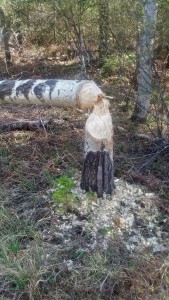
We still get excited when we see a Beaver, and can’t help to marvel at its tree-cutting and engineering skills, and most of all, its never-ending work ethic. But, we’ve also learned to keep our distance when that tail starts slapping the water!
